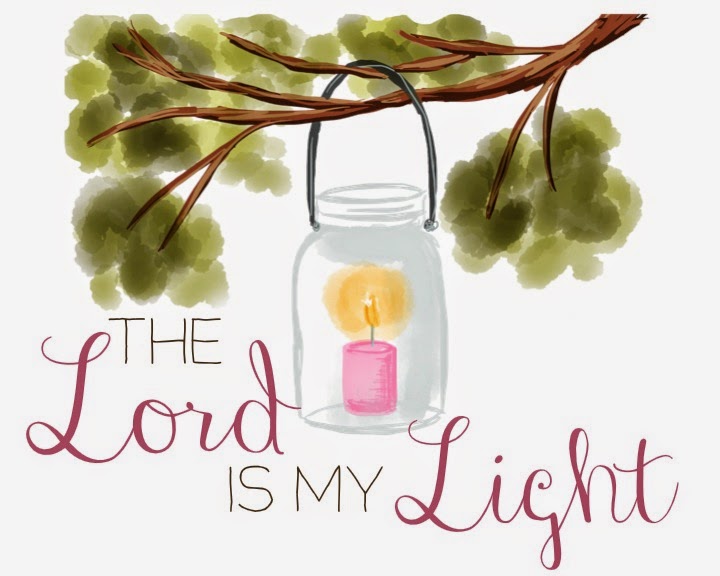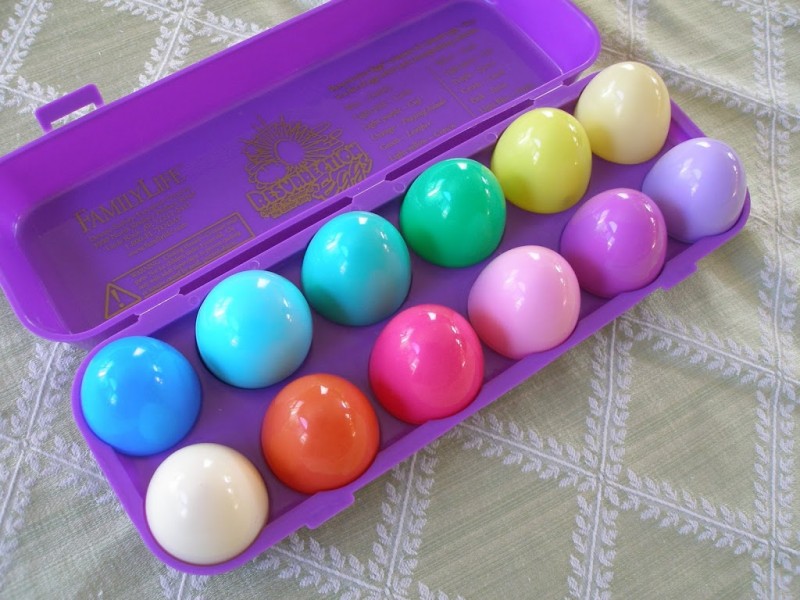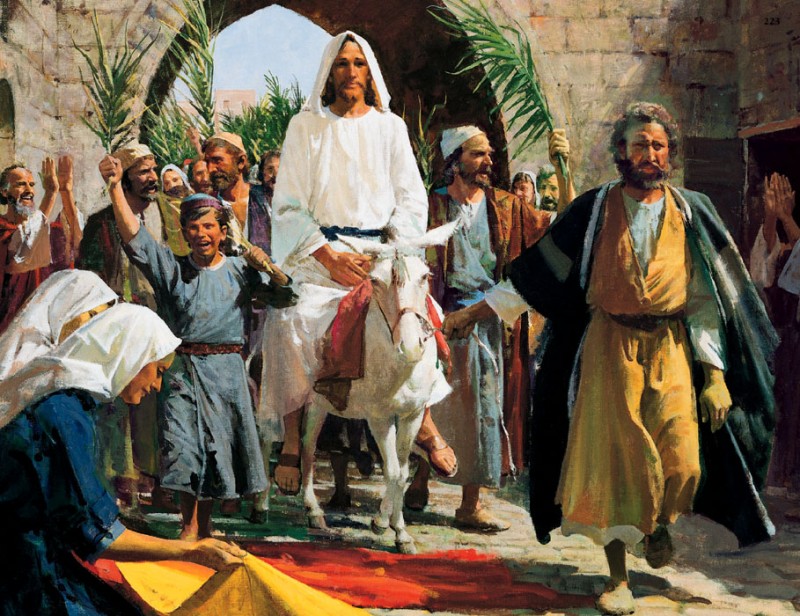Welcome to the first day of our 14 Day Walk with Christ. I hope you and your family enjoy these lessons and take time to Come unto Christ as we anticipate the wonderful celebration of Easter.

Saving the universe one project at a time!
Welcome to the first day of our 14 Day Walk with Christ. I hope you and your family enjoy these lessons and take time to Come unto Christ as we anticipate the wonderful celebration of Easter.


 Here are the Scripture references for the 12 eggs:
Here are the Scripture references for the 12 eggs:
1. Ride on a Donkey – Matthew 21:1-9
2. Silver Coins – Matthew 26:14-16, 46-50; 27:1-5
3. Passover Cup – Matthew 26:17-19, 26-28
4. Praying Hands – Mark 14: 32-42
5. Leather Whip – John 19; 1-15 Matthew 27:26-31
6. Crown of Thorns – Matthew 27:29-31
7. Nails in the Cross – John 19: 16-22
8. Dice for Gambling – John 19: 23-25
9. Soldier’s Spear – John 19:31-37
10. Linen Wrapping – Matthew 27: 57-61
11. Stone of the Tomb – Matthew 28:1-3
12. Empty Tomb – Matthew 28:5-8
Activity
For the past 15 years it is a tradition in our family to make “Resurrection Rolls.” I didn’t come up with this recipe – it’s one of those things that gets passed around. This is how we make them:
Step 3
The Marshmallow represents Jesus’ body. Take the marshmallow and dip it in the melted butter and roll it in the cinnamon & sugar mixture. This represents the oils and spices used to prepare the body.
Step 4 – Next place the marshmallow in the middle of your dough rectangle. I added a little more cinnamon on top of the marshmallow. This next part is tricky. You want to wrap the marshmallow inside the dough without having any holes. They don’t look pretty – don’t worry….they will taste yummy. Keep working the dough till it covers the marshmallow completely.
Give thanks before meals
Gratitude Game:
Ahead of time, write items on slips of paper. These can be anything: trees, birds, fish, pets, house, rocks, grass, our country, tissues, teachers, music, cell phones, our country, fruit, hot water, school, teachers, etc.
Divide into 2 teams.
One team will select a piece of paper and read it out loud. The other team will have 3 seconds to say what they appreciate about that item.
Other Gratitude Activities:
Play gratitude pictionary or cherades.
Have the children take pictures or collect pictures of things they are grateful for. Make a family gratitude board out of the pictures or play a game where you have to guess whose picture it is.
Take turns going around in a circle naming what you are grateful for – only you have to name things in alphabetical order.
Write letters of gratitude and send to people
You need river rocks, paint, Mod Podge (or white glue), magazines
Collect your rocks – you may need to wash them. Have everyone paint their rocks. Put your name on the rock. We got creative and the children painted them many different colors!!
Next get your magazines out and cut out words describing why you are grateful for each person in your family.

“After I had come home from school one day, I was sitting in a chair reading the newspaper. My daughter Sarah, who was seven years old, came in and said, “Dad, can I have a bike? I’m the only kid on the block who doesn’t have a bike.”
Well, I didn’t have enough money to buy her a bike, so I stalled her and said, “Sure, Sarah.”
She said, “How? When?”
I said, “You save all your pennies, and pretty soon you’ll have enough for a bike.” And she went away.
A couple of weeks later as I was sitting in the same chair, I was aware of Sarah doing something for her mother and getting paid. She went into the other room and I heard “clink, clink.” I asked, “Sarah, what are you doing?”
She came out and she had a little jar all cleaned up with a slit cut in the lid and a bunch of pennies in the bottom. She looked at me and said, “You promised me that if I saved all my pennies, pretty soon I’d have enough for a bike. And, Daddy, I’ve saved every single one of them.”
She’s my daughter, and I love her. My heart melted. She was doing everything in her power to follow my instructions. I hadn’t actually lied to her. If she saved all of her pennies she would eventually have enough for a bike, but by then she would want a car. But her needs weren’t being met. Because I love her, I said, “Let’s go downtown and look at bikes.”
We went to every store in Williamsport, Pennsylvania. Finally we found it—the perfect bicycle, the one she knew in the premortal existence. She got up on that bike; she was thrilled. She then saw the price tag, reached down, and turned it over. When she saw how much it cost, her face fell and she started to cry. She said, “Oh Dad, I’ll never have enough for a bicycle.”
So I said, “Sarah, how much do you have?”
She answered, “Sixty-one cents.”
“I’ll tell you what. You give me everything you’ve got and a hug and a kiss, and the bike is yours.” Well, she’s never been stupid. She gave me a hug and a kiss. She gave me the sixty-one cents. Then I had to drive home very slowly because she wouldn’t get off the bike. She rode home on the sidewalk, and as I drove along slowly beside her it occurred to me that this was a parable for the Atonement of Christ.
We all want something desperately—it isn’t a bicycle. We want the celestial kingdom. We want to be with our Father in Heaven. And no matter how hard we try, we come up short. At some point we realize, “I can’t do this!” That was the point my wife had reached. It is at that point that the sweetness of the gospel covenant comes to our taste as the Savior proposes, “I’ll tell you what. All right, you’re not perfect. How much do you have? What can you do? Where are you now? Give me all you’ve got, and I’ll pay the rest. Give me a hug and a kiss; enter into a personal relationship with me, and I will do what remains undone.”
There is good news and bad news here. The bad news is that he still requires our best effort. We must try, we must work—we must do all that we can. But the good news is that having done all we can, it is enough—for now. Together we’ll make progress in the eternities, and eventually we will become perfect—but in the meantime, we are perfect only in a partnership, in a covenant relationship with him. Only by tapping his perfection can we hope to qualify.”
Journal:
How do you feel knowing we can’t make it back to Heavenly Father on our own and that Jesus, our Savior, is there and has made up all the difference? How can you earn your “61 cents”? How can we do all that we can? How does this give you hope?
Handout:
I made a pink bike version and a green bike version. Click HERE to download.


If you have time, it would be fun to take a family bike ride!!
Scripture Discussion
Read the parable of the talents Matthew 25: 13-30.
In the parable, the talents refer to pieces of money. For us talents mean abilities we can develop to bless and help others.
Scripture Discussion:
Read the Parable of the Good Samaritan in Luke 10:25-37. There is a nice video depicting the parable. Click Here for the video.
If you have time, it would be fun to have everyone act out the story.
Activity:
Have everyone write 5 to 10 names on individual strips of paper of people that could be considered your “neighbor.” This can be people in your family, people on your street, teachers, etc. Put the names in a bowl.
Take turns drawing the names out of the bowl and read them out loud. Have everyone give suggestions of service that could be offered to that person. It’s OK if someones name is in there more than once. Examples of service can be:
write a note
bake some treats
smile
give someone a compliment
help a family member clean up or do chores
help a teacher with a project
play nicely with a sibling
Call someone on the phone for a nice visit
don’t gossip or argue
be on time
Service:
We are taking this opportunity to visit people as a family and take a plate of baked goods. Do what you feel is best for your family.
Handout:
Click HERE
Journal:
Write in your journal the names of a few people you want to do something nice for. Write how you can carry out your idea. Also write how you feel when someone does something nice for you. How does Jesus want us to treat our Neighbor?